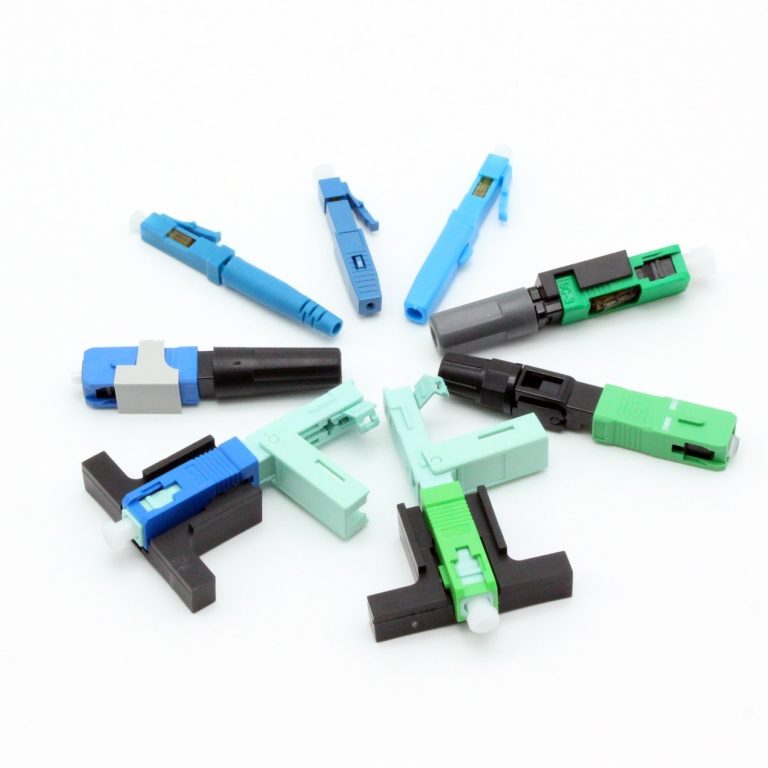Fiber optic adapters connect two connectors, ensuring minimal loss and optimal light transmission. They are mainly used for connections between fiber optic patch cable or between fiber optic patch cords and devices. So, do you know what types of fiber optic adapters are there? What factors should be considered when choosing a fiber optic adapter and how to properly clean it after using it? The following will introduce relevant knowledge about fiber optic adapters to answer the above questions for you.
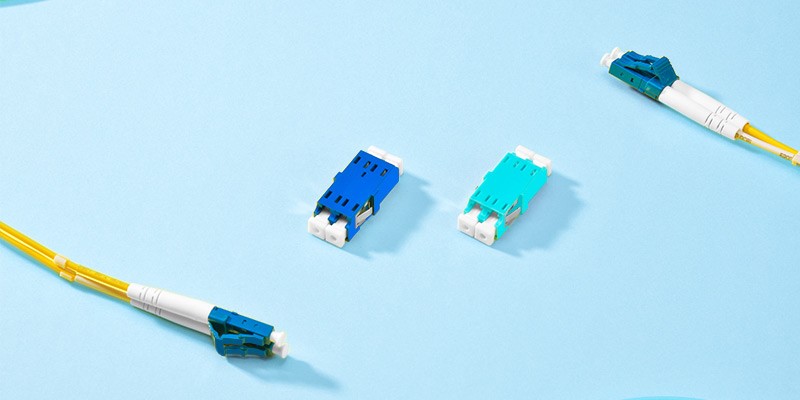
What is a fiber optic adapter?
Fiber optic adapters which are also called fiber optic couplers or fiber optic flanges are one of the most widely used basic components in fiber optic communications. It’s used in fiber optic link connections in telecommunications networks, cable TV networks, and regional networks. The main function of fiber optic adapters is to achieve docking of the same or different fiber optic active connectors with less loss (that is, minimal impact on the system).
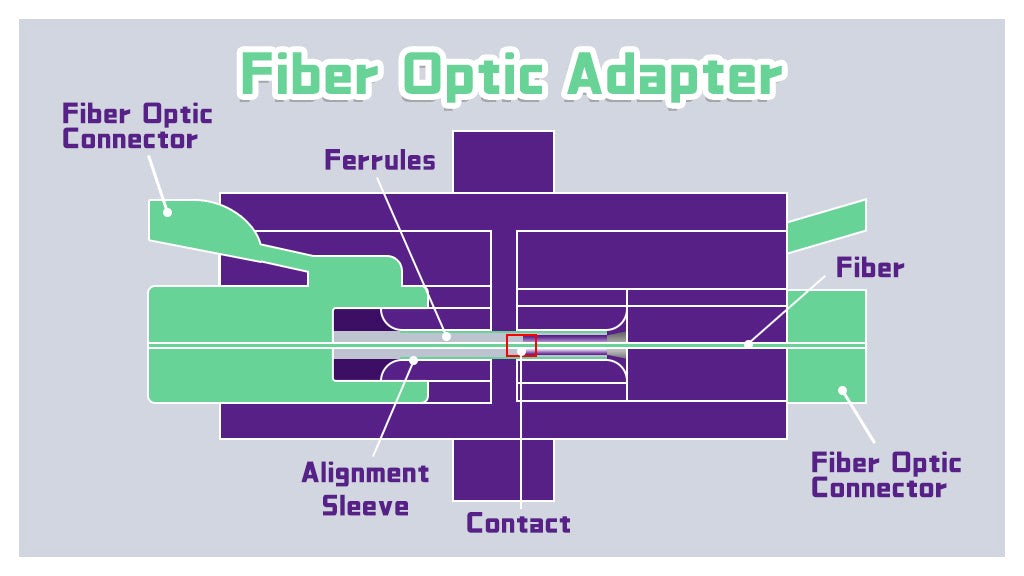
Common types of fiber optic adapters
There are many types of fiber optic adapters. The following mainly introduces four common types of fiber optic adapters: LC fiber optic adapter, FC fiber optic adapter, SC fiber optic adapter, and bare fiber optic adapter.
LC fiber optic adapter
The connector of the LC fiber optic adapter is a small square. It is divided into SM and MM LC fiber optic adapters according to the fiber type.
FC fiber optic adapter
The connector of the FC fiber optic adapter is round, It is also divided into single-mode and multi-mode. This type of fiber optic adapter uses a metal shell and a ceramic sleeve on the outside. The fastening method is a screw buckle, which is stable and reliable and can be used to connect FC fiber optic patch cords or FC connectors.
SC fiber optic adapter
The SC fiber optic adapter connector is a large square head with various types, such as a standard female-female SC fiber optic adapter and a hybrid SC fiber optic adapter (such as an SC-LC fiber optic adapter). Currently, most SC fiber adapters use ceramic alignment sleeves due to their precision and durability. However, multimode SC fiber adapters often use bronze sleeves, which are suitable for their specific requirements. SC fiber adapters are characterized by high compressive strength, small insertion loss fluctuations, high installation density, stability and reliability, and can be used to connect SC fiber jumpers or SC connectors.
Bare fiber adapters
Bare fiber adapters are utilized to link bare fibers directly to optical devices. They provide a temporary, convenient connection for testing and troubleshooting without needing to terminate the fiber. This adapter enables the cable to be inserted into the connection slot.
Factors to consider when choosing a fiber adapter
Because there are many types of fiber adapters, and the appearance of fiber adapters supplied by different suppliers is also very similar, you may not know how to choose. When selecting a fiber adapter, you should generally focus on the following two aspects:
Connector and cable type
First, determine the type of fiber adapter according to the type of connecting cable and connector. For example:
- If the fiber adapter is connected to a single-mode fiber jumper, select a single-mode fiber adapter. If it is connected to a multi-mode patch cable, then select a multi-mode adapter.
- The connector types at both ends of the fiber optic adapter are the same. Select a fiber optic adapter that matches the connector type, like an LC-LC adapter. However, if the types of connectors connected are different, you need to choose a hybrid fiber optic adapter, such as an LC-SC fiber optic adapter.
Alignment sleeve material
Secondly, give preference to fiber optic adapters with ceramic alignment sleeves. The alignment sleeve is a vital part of a fiber optic adapter. Some manufacturers will choose metal as the material for the alignment sleeve, but it has been verified that the use effect of fiber optic adapters made of ceramic is much better than that of using metal alignment sleeve, because the crystal structure of ceramics is very hard and will not deform over time like metal materials. So it can achieve fast alignment and high-precision fiber connection.
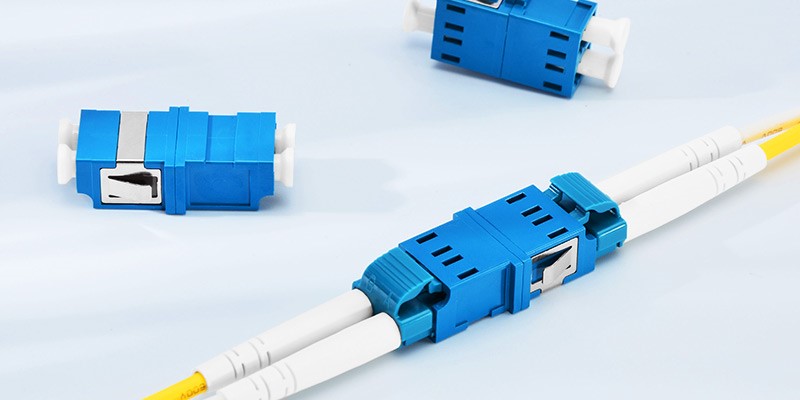
Cleaning method of fiber optic adapters
Despite being small components in the fiber optic wiring system, adapters play a crucial role. They need to be cleaned regularly, just like other fiber optic equipment, to maintain optimal performance. There are two main cleaning methods:
Dry cleaning: First, insert a dry cleaning stick into the fiber adapter, rotate it to clean it, then remove it, and then align the cleaning stick with the inside of the sleeve, clean the connector inside the fiber adapter, and check whether the end face of the connector is contaminated.
Wet cleaning: Prepare a clean stick and cleaning fluid, insert the wet cleaning stick into the adapter, and rotate it on the surface of the sleeve. Next, use a dry cotton swab to clean the connector inside the fiber adapter, and then inspect the connector end face for any contamination.
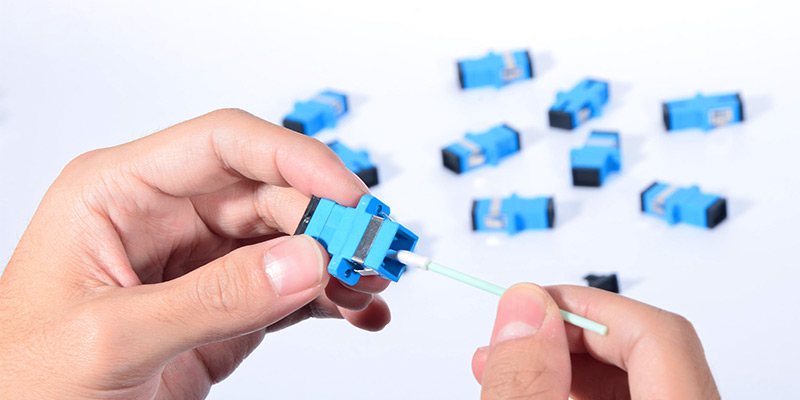
For fiber adapters, fiber alignment is very important. If the fiber is misaligned, it will result in significant connection loss. In a fiber optic communication system, no matter how simple or small the component is, it will play a vital role in the entire system, otherwise it will affect the whole system. In addition, OMC has a variety of fiber optic adapters for you to choose from which are low insertion loss, good interchangeability, and repeatability. They are undoubtedly the ideal choice for your fiber optic link connection. For more details about fiber optic adapter products, you can visit the OMC official website to find the product page.


